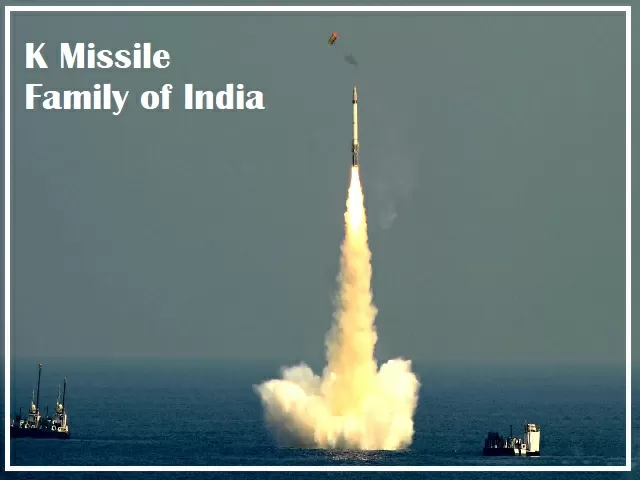SOURCE: AFI


At the foundation stone laying ceremony of the Kerala Spacepark (KSPACE), a former scientist from BrahMos Aerospace Pvt. Ltd. dropped a bombshell, revealing that the Defence Research and Development Organisation (DRDO) is actively developing the K-6 submarine-launched ballistic missile (SLBM). The K-6, with an estimated range of 8,000 km and a hypersonic speed of Mach 7.5, is poised to significantly enhance India’s strategic deterrence capabilities. The scientist also confirmed that DRDO has completed development of the K-5 SLBM (5,000 km range) and that the K-4 SLBM (3,500 km range) is already inducted into the Indian Navy’s Arihant-class nuclear-powered ballistic missile submarines (SSBNs).
The KSPACE foundation stone laying program, held in Thiruvananthapuram, marks a milestone in Kerala’s ambition to become a hub for space and defense technology. KSPACE aims to foster innovation, support startups, and facilitate collaboration between industry, academia, and research institutions. The event, attended by dignitaries, scientists, and industry leaders, provided a platform for showcasing India’s advancements in aerospace and defense.
It was during a panel discussion on indigenous defense technologies that the former BrahMos scientist, who played a key role in the development of the supersonic BrahMos cruise missile, shared critical updates on DRDO’s K-series missile program. The revelations underscored India’s rapid progress in building a robust sea-based nuclear deterrent, aligning with its “no-first-use” nuclear policy and credible minimum deterrence doctrine.
The K-6 SLBM, under development at DRDO’s Advanced Naval Systems Laboratory in Hyderabad, is a three-stage, solid-fuel missile with multiple independently targetable reentry vehicle (MIRV) capabilities. With a reported range of 8,000 km, it can strike targets across vast distances, covering nearly all of Asia and parts of Europe and Africa from Indian waters. Its hypersonic speed of Mach 7.5 (approximately 9,187 km/h) makes it difficult to intercept, enhancing its survivability against advanced missile defense systems.
The K-6 is designed to arm the Indian Navy’s future S5-class SSBNs, which are expected to be larger and more advanced than the Arihant-class submarines. With a length of 12 meters, a width of 2 meters, and a payload capacity of 2-3 tonnes, the K-6 represents a significant technological leap. Its MIRV capability allows it to deliver multiple warheads to different targets, amplifying its strategic impact.
The former BrahMos scientist also confirmed that DRDO has completed development of the K-5 SLBM, which has a range of 5,000-6,000 km and is designed to arm future variants of Arihant-class submarines, such as the S4 and S4*. The K-5, like the K-6, features MIRV capabilities and countermeasures to evade radar detection, making it one of the fastest missiles in its class. Development began in 2015, and the missile is expected to undergo testing soon, following the completion of K-4 trials in 2020.
The K-4 SLBM, with a 3,500 km range, has already been inducted into the Indian Navy’s INS Arihant and INS Arighaat, the first two Arihant-class SSBNs. The K-4, tested successfully multiple times, including from INS Arighaat on November 28, 2024, provides India with a credible second-strike capability, allowing submarines to launch nuclear warheads from underwater without needing to approach adversarial shores. Its 10-meter length, 20-tonne weight, and 2-tonne payload capacity make it a potent addition to India’s nuclear triad.
The Arihant-class submarines, including INS Arihant (commissioned in 2016) and INS Arighaat (commissioned in August 2024), are central to India’s sea-based nuclear deterrence. While INS Arihant initially carried the shorter-range K-15 Sagarika (750 km), the integration of K-4 missiles has significantly enhanced its operational flexibility. Future submarines, such as S4 and S4*, will carry eight K-4 missiles, doubling the capacity of earlier variants.
The development of the K-6, alongside the completed K-5 and operational K-4, positions India among an elite group of nations with advanced SLBM capabilities, including the US, Russia, China, France, and the UK. The K-6’s 8,000 km range and Mach 7.5 speed address gaps in India’s strategic reach, particularly in countering China’s growing naval presence and its Type 096 SSBNs, which carry JL-3 SLBMs with a 10,000 km range.
India’s nuclear triad—comprising land-based Agni missiles, air-delivered nuclear bombs, and sea-based SLBMs—is now more robust, with the sea leg gaining prominence. The K-series missiles, named after former President Dr. APJ Abdul Kalam, are lighter, faster, and stealthier than their Agni counterparts, thanks to advanced composite propellants developed by the High Energy Materials Research Laboratory (HEMRL).
NOTE: AFI is a proud outsourced content creator partner of IDRW.ORG. All content created by AFI is the sole property of AFI and is protected by copyright. AFI takes copyright infringement seriously and will pursue all legal options available to protect its content.